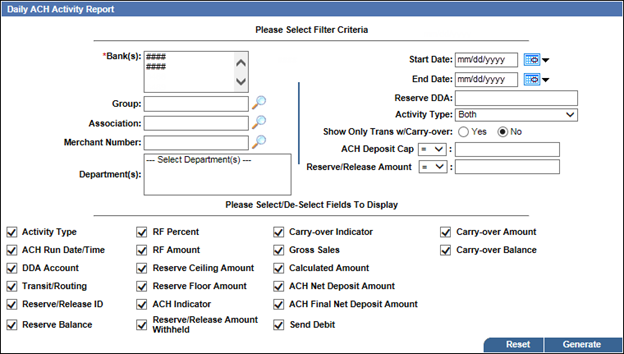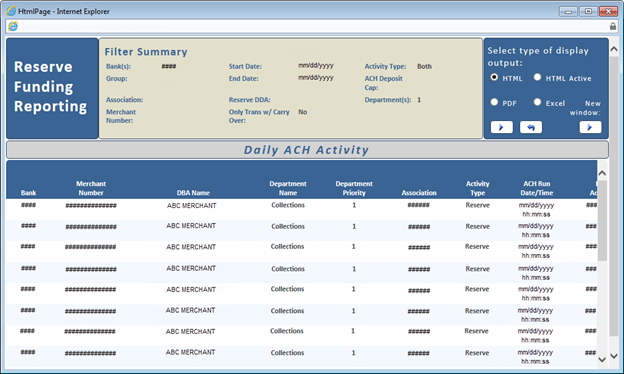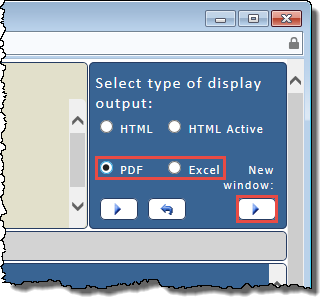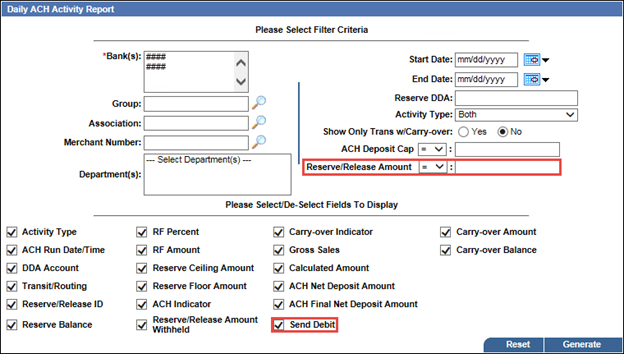When using the  Daily ACH Activity report to monitor negative reserve activity:
Daily ACH Activity report to monitor negative reserve activity:
This report displays all daily reserve and release ACH activity over a given time period by a given entity (Bank, Merchant, Association, Group, etc.).
Note: Access to this report depends on your user entitlements.
To run the Daily ACH Activity Report:
The Daily ACH Activity Report criteria selection box opens.

 Departments to report on.
Departments to report on.An entity that can Reserve and Release Funds from a merchant.
 Reserve DDA
Reserve DDAThe bank's Reserve DDA number where funds are held on reserve, to which a merchant is associated.
 Activity Type
Activity TypeSelect one of the following activity types to report on from the drop-down list:
 ACH Deposit Cap
ACH Deposit CapThis field and its adjacent drop-down list enable you to search for merchants based on an ACH deposit cap The maximum deposit to fund to the merchant. Any amount over the deposit cap is placed into reserve., that is, the maximum deposit to fund to the merchant. Select the required operator (>, =, or <) from the drop-down list, and then enter the required amount in the adjacent field.
For example, to search for merchants with an ACH deposit cap of less than $2000, select < from the drop-down list, and enter 2000 in the adjacent field.
 Reserve/Release Amount
Reserve/Release AmountThis field and its adjacent drop-down list enable you to search for merchants based on a specific reserve or release amount. Once you have selected the appropriate Activity Type, select the required operator (>, =, or <) from the drop-down list, and then enter the required amount in the adjacent field.
For example, to search for merchants with reserve amount of less than $5000:
Those that are selected will be included in the report.
The report opens in a new window.

 Download, save, and print the report as required.
Download, save, and print the report as required.You can download a report in portable document format (PDF) or Microsoft Excel format. You can then save or print the information as required.
Tip: As well as the method described here, you can also use the HTML Active column report functionality to print a report.

The PDF or Excel version of the report opens in a new window.
For example, to report on any negative amount that was reserved or released, select < (less than) from the drop-down list, and then enter 0.00 in the adjacent field.
